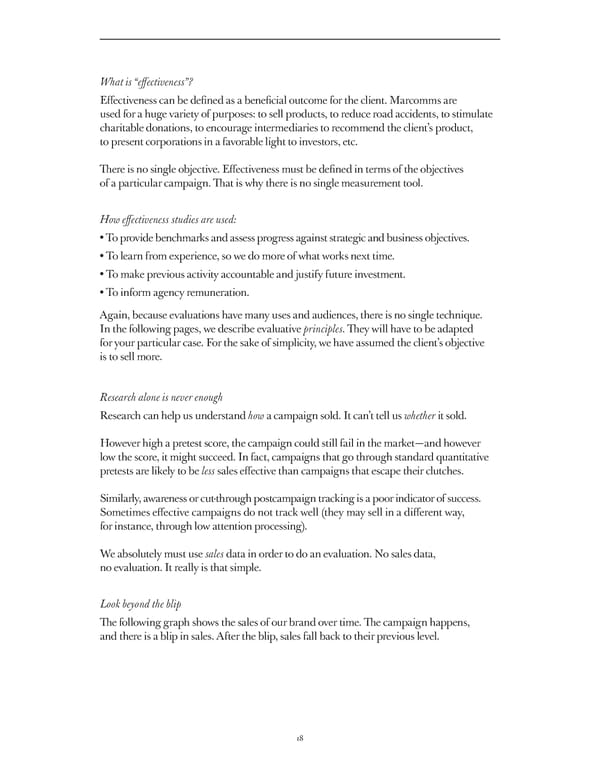What is “effectiveness”? Effectiveness can be defined as a beneficial outcome for the client. Marcomms are used for a huge variety of purposes: to sell products, to reduce road accidents, to stimulate charitable donations, to encourage intermediaries to recommend the client’s product, to present corporations in a favorable light to investors, etc. There is no single objective. Effectiveness must be defined in terms of the objectives of a particular campaign. That is why there is no single measurement tool. How effectiveness studies are used: • To provide benchmarks and assess progress against strategic and business objectives. • To learn from experience, so we do more of what works next time. • To make previous activity accountable and justify future investment. • To inform agency remuneration. Again, because evaluations have many uses and audiences, there is no single technique. In the following pages, we describe evaluative principles. They will have to be adapted for your particular case. For the sake of simplicity, we have assumed the client’s objective is to sell more. Research alone is never enough Research can help us understand how a campaign sold. It can’t tell us whether it sold. However high a pretest score, the campaign could still fail in the market — and however low the score, it might succeed. In fact, campaigns that go through standard quantitative pretests are likely to be less sales effective than campaigns that escape their clutches. Similarly, awareness or cut-through postcampaign tracking is a poor indicator of success. Sometimes effective campaigns do not track well (they may sell in a different way, for instance, through low attention processing). We absolutely must use sales data in order to do an evaluation. No sales data, no evaluation. It really is that simple. Look beyond the blip The following graph shows the sales of our brand over time. The campaign happens, and there is a blip in sales. After the blip, sales fall back to their previous level. 18
 A Guide To Effectiveness Page 17 Page 19
A Guide To Effectiveness Page 17 Page 19